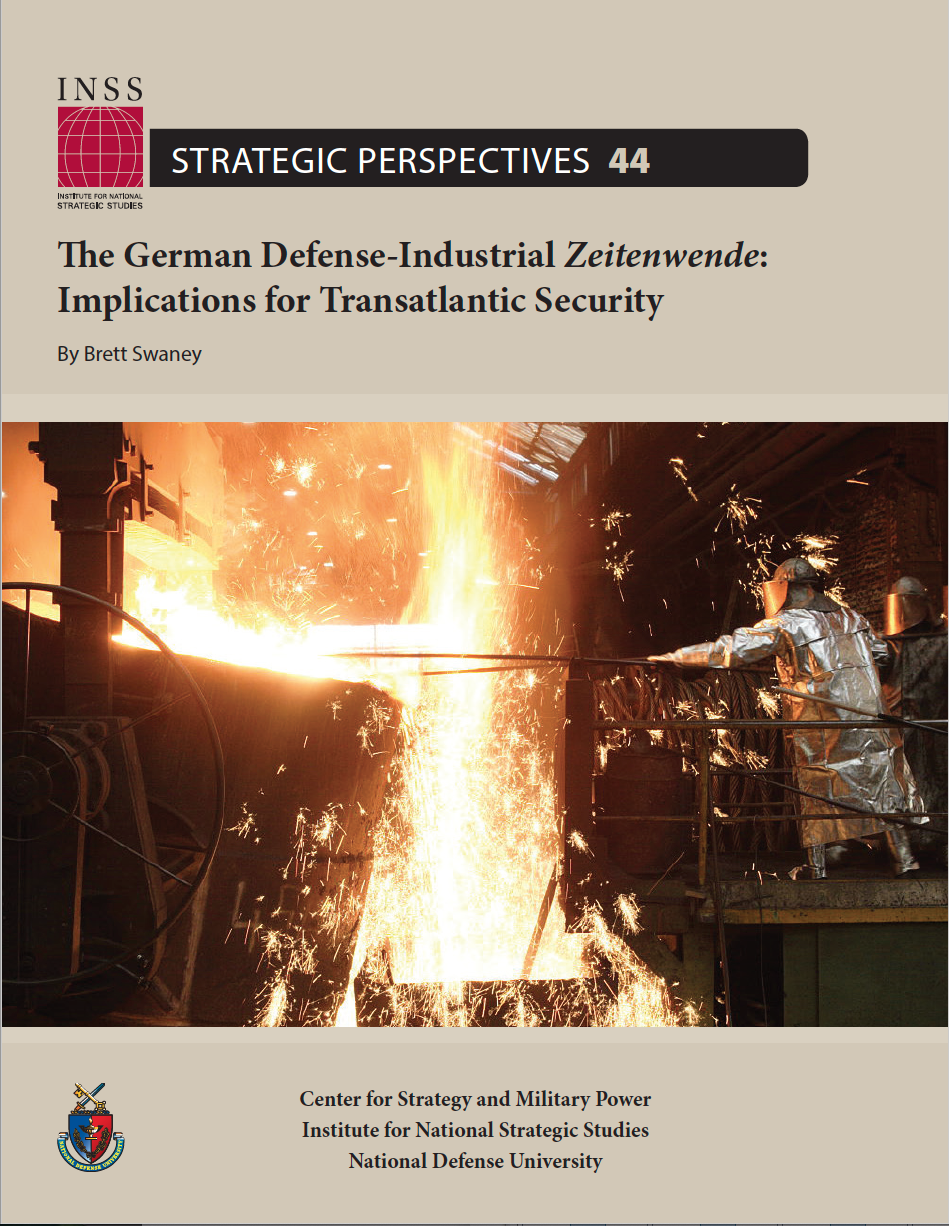Download PDF
Executive Summary

The Zeitenwende, or “watershed moment”—announced by Chancellor Olaf Scholz in February 2022, days after Russia’s invasion of Ukraine—outlined a set of policy shifts, including the development of Germany’s first-ever National Security Strategy, that appeared to signal a greater role for Germany in the defense and security of Europe. The German National Security Strategy draws a clear connection between the need for a robust defense-industrial base and the foundation for the capabilities needed to meet North Atlantic Treaty Organization (NATO) defense and deterrence commitments, support Ukraine, and provide for the recapitalization of allies and partners. To date, however, there has been less focus on the extent to which the Zeitenwende galvanized change in Germany’s important defense-industrial base. This study assesses the extent to which the strategic shift signaled by the Zeitenwende is reflected and being implemented in Germany’s defense-industrial base policy and the implications for transatlantic security.
Russia’s full-scale invasion of Ukraine has highlighted the serious deficiencies in the ability of transatlantic allies to quickly surge defense production. The unprecedented expenditures of munitions and other military equipment are indicative of the serious defense-industrial base challenges that face NATO allies as European militaries attempt to recapitalize and rearm after decades of underinvestment, while still maintaining support for Ukraine. It also points to significant industrial challenges in any future high-intensity conflict or crisis with a near-peer adversary. Weaknesses in the transatlantic defense-industrial base threaten NATO’s defense and deterrence posture by reducing military readiness and raising questions about NATO’s ability to deter future conflict.
Strategists and scholars have also questioned whether the United States can sustain a deterrence strategy in both Europe and the Asia-Pacific beyond 2026. This raises the prospect of heightened risk from 2027–2035, when the United States and its allies may find it necessary to deter or defeat both Russia and China simultaneously. In the event of a conflict with China that absorbs U.S. bandwidth and resources in the Indo-Pacific, European and NATO allies would be vulnerable to Russian opportunism. Europe must be able to defend itself, and a militarily stronger Germany, with a defense-industrial base to match, is a critical ally with the potential to offset risk in Europe and play a far greater role in transatlantic security.
Without a sustained transformation by Germany that appreciably strengthens the European pillar of security within NATO, the burden will fall disproportionately on others, and demand for U.S. engagement in Europe will grow in tension with the strategic bandwidth and U.S. warfighters needed for the Indo-Pacific. To strengthen the transatlantic defense-industrial ecosystem, the United States should provide consistent bilateral political support for German rearmament; encourage and support the reform of defense-industrial base laws, regulations, and authorities; work to expand defense-industrial cooperation bilaterally and through NATO formats; and work cooperatively to incentivize and expand German defense-industrial base cooperation with Ukraine. By exploring the defense-industrial Zeitenwende from 2022 through 2024, this study contributes to the ongoing debate around the extent of Germany’s defense and security transformation; the Zeitenwende; the role of the defense-industrial base as a foundation for defense and deterrence; and a stronger European pillar within NATO.
Read More